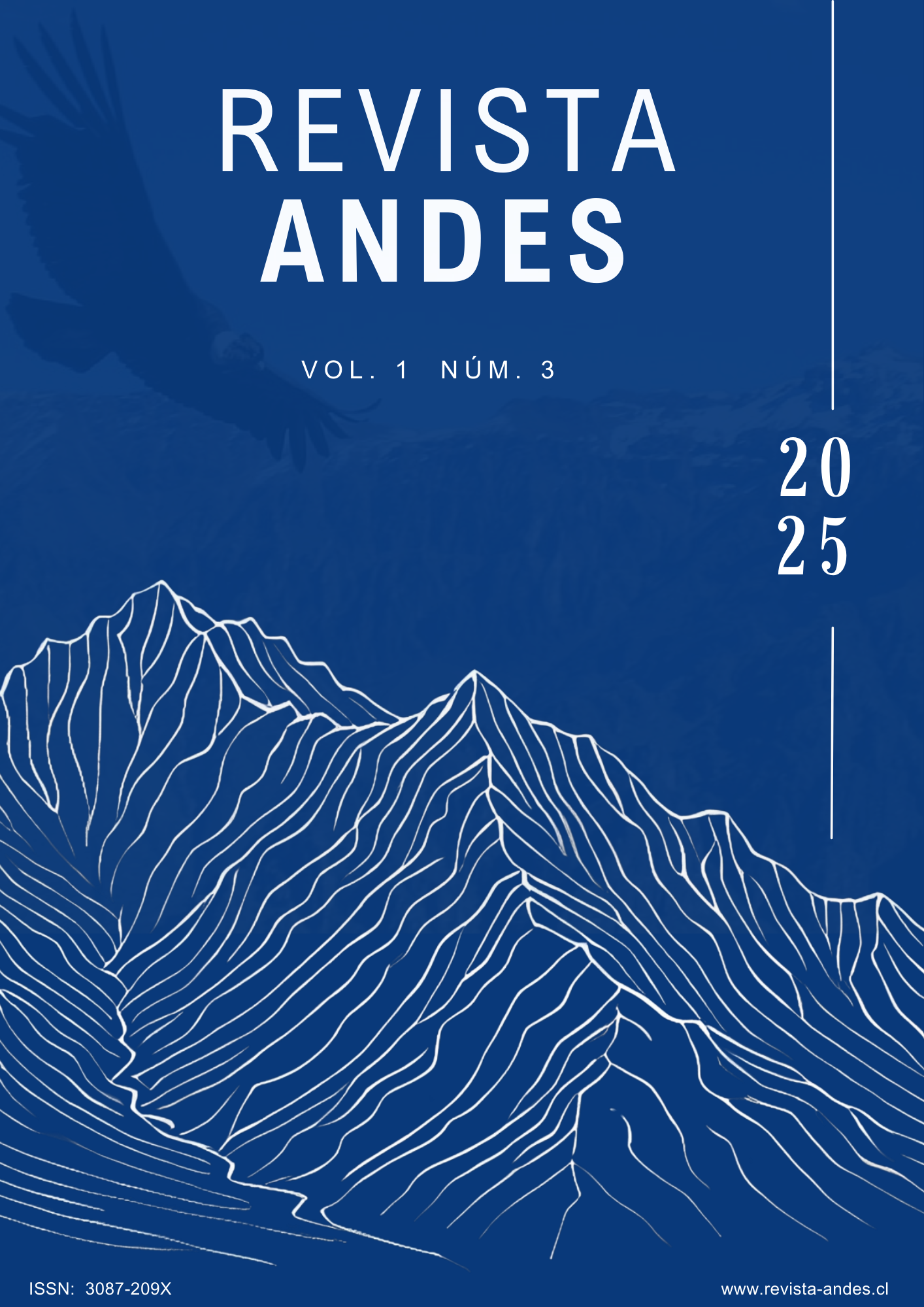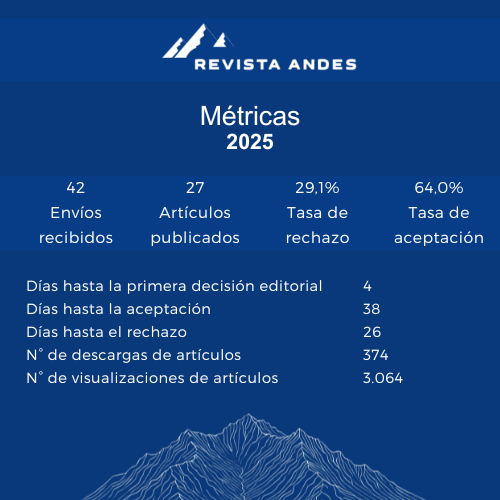Plethysmographic Variability Index as a Non-Invasive Predictor of Fluid Responsiveness in Ventilated Patients
DOI:
https://doi.org/10.5281/zenodo.17186156Keywords:
Anesthesiology, Plethysmography, Fluid Therapy, Mechanically Ventilated Critical Patient, Fluid OverloadAbstract
Introduction: The pleth variability index (PVi) is a non-invasive method derived from the plethysmographic signal obtained via pulse oximetry, measuring respiratory variations in pulse wave amplitude. Objective: To evaluate the utility of non-invasive predictors of fluid responsiveness to optimize fluid therapy in critically ill ventilated patients. Methodology: Qualitative evidence review study in Web of Science from 2020 to 2025. Fifteen articles were analyzed after applying three exclusion criteria. Results: In mechanically ventilated critically ill patients, fluid overload is significantly associated with increased mortality, reaching a relative risk of 19% (RR = 1.19) higher probability of death per additional liter of positive fluid balance. PVi is a dynamic, non-invasive parameter that allows identification of fluid responders, facilitating a more targeted resuscitation strategy with lower risk of complications. Discussion: Fluid overload in ventilated patients is linked to higher mortality and organ failure, especially in sepsis, ARDS, and AKI. Limitations of static parameters have prompted the use of dynamic predictors like PVi, which allows real-time, non-invasive assessment of fluid responsiveness. Conclusion: Fluid therapy in critically ill ventilated patients is essential, but excess fluids increase mortality, AKI, and prolonged ventilation. PVi provides dynamic, non-invasive monitoring to optimize fluid administration and improve outcomes. Further studies are needed to validate its clinical effectiveness.
Downloads
References
[1] Fernandez M, Nasimba K, Gónzalez D. Prácticas de enfermería avanzada durante la administración de coloides y cristaloides en pacientes con shock hipovolémico en el área de emergencia. Revisión sistemática. Revista Científica Internacional [Internet]. 2025 [citado el 14 de julio de 2025]. Disponible en: https://doi.org/10.69639/arandu.v12i1.787
[2] Ripollés-Melchor J, Aldecóa C, Lorente JV, Ruiz-Escobar A, Monge-García MI, Jiménez I, Jover-Pinillos JL, Galán-Menendez P, Tomé-Roca JL, Fernández-Valdes P, Colomina MJ. Prueba de volumen en el quirófano: subestudio planificado del estudio observacional Fluid Day. Revista Española de Anestesiología y Reanimación [Internet]. 2023 [citado el 14 de julio de 2025]. Disponible en: https://doi.org/10.1016/j.redar.2022.03.005
[3] Vieira R, Salvadori C, Rezende M, Auler JO. Variação da pressão sistólica como método diagnóstico da hipovolemia durante anestesia para cirurgia cardíaca. Rev. Bras. Anestesiol [Internet]. 2005 [citado el 14 de julio de 2025]. Disponible en: https://doi.org/10.1590/S0034-70942005000100002
[4] Yin J, Ho K. Use of plethysmographic variability index derived from the Massimo® pulse oximeter to predict fluid or preload responsiveness: a systematic review and meta-analysis. Anaesthesia [Internet]. 2012 [citado el 14 de julio de 2025]. Disponible en: https://doi.org/10.1111/j.1365-2044.2012.07117.x
[5] Oporto G, Palavecino R, Escándar V, Valdés C. Diferencias en el índice de variabilidad pletismográfica PVi® entre la posición prono común vs prono Georgia post inducción anestésica. Revista Chilena de Estudiantes de Medicina [Internet]. 2018 [citado el 14 de julio de 2025]. Disponible en: https://doi.org/10.5354/0718-672X.2018.76051
[6] Zampieri F, Bagshaw S, Semler M. Fluid Therapy for Critically Ill Adults With Sepsis: A Review. JAMA [Internet]. 2023 [citado el 14 de julio de 2025]. Disponible en: http://doi.org/10.1001/jama.2023.7560
[7] OPS. Sepsis. Organización Panamericana de Salud [Internet]. 2024 [citado el 14 de julio de 2025]. Disponible en: https://www.paho.org/es/temas/sepsis
[8] Rodríguez V, Rodríguez S, Mola Y, Díaz E. Incidencia y mortalidad del síndrome de dificultad respiratoria aguda. Rev. Arch Med Camagüey [Internet]. 2015 [citado el 14 de julio de 2025]. Disponible en: http://scielo.sld.cu/pdf/amc/v19n3/amc030315.pdf
[9] Ávila D, Echeverry D, Aguirre M. Sepsis after cardiac surgery: The clinical challenge. Review article. Acta Colombiana de Cuidado Intensivo [Internet]. 2021 [citado el 14 de julio de 2025]. Disponible en: https://doi.org/10.1016/j.acci.2020.05.001
[10] Lux S, Ramos D, Florestano C, Fritzsche N, Lalanne I, Moreno N, Hernández J, Gavilán J, Arancibia F. Neumonía asociada a ventilación mecánica en pacientes con neumonía grave por SARS-CoV-2. Revista chilena de enfermedades respiratorias [Internet]. 2022 [citado el 14 de julio de 2025]. Disponible en: http://dx.doi.org/10.4067/s0717-73482022000400168
[11] Messmer A, Zingg C, Müller M, Gerber J, Schefold J, Pfortmueller C. Fluid Overload and Mortality in Adult Critical Care Patients—A Systematic Review and Meta-Analysis of Observational Studies. Critical Care Medicine [Internet]. 2020 [citado el 14 de julio de 2025]. Disponible en: http://doi.org/10.1097/CCM.0000000000004617
[12] Felker M, Ellison D, Mullens W, Cox Z, Testani J. Diuretic Therapy for Patients With Heart Failure: JACC State-of-the-Art Review. JACC Journals [Internet]. 2020 [citado el 14 de julio de 2025]. Disponible en: https://doi.org/10.1016/j.jacc.2019.12.059
[13] Boorsma E, Maaten J, Damman K, Dinh W, Gustafsson F, Goldsmith S, Burkhoff D, Zannad F, Udelson J. Voors A. Congestion in heart failure: a contemporary look at physiology, diagnosis and treatment. Nature Reviews Cardiology [Internet]. 2020 [citado el 14 de julio de 2025]. Disponible en: https://doi.org/10.1038/s41569-020-0379-7
[14] Tomicic V, Espinoza M, Andresen M, Molina J, Calvo M, Ugarte H, Godoy J, Gálvez S, Maurelia JC, Delgado I, Esteban A. Características de los pacientes que reciben ventilación mecánica en unidades de cuidados intensivos: primer estudio multicéntrico chileno. Rev Méd Chile [Internet]. 2008 [citado el 14 de julio de 2025]. Disponible en: http://dx.doi.org/10.4067/S0034-98872008000800001
[15] Ruiz C, Díaz M, Zapata J, Bravo S, Panay S, Escobar C, Godoy J, Andresen M, Castro R. Características y evolución de los pacientes que ingresan a una Unidad de Cuidados Intensivos de un hospital público. Rev Méd Chile [Internet]. 2016 [citado el 14 de julio de 2025]. Disponible en: http://dx.doi.org/10.4067/S0034-98872016001000009
[16] Sánchez TDF, Tlacuílo MA, Arias GA. Sobrecarga de fluidos en pacientes hospitalizados en una institución de segundo nivel en México. Revista CONAMED [Internet]. 2020 [citado el 14 de julio de 2025]. Disponible en: http://doi.org/10.35366/95982
[17] Kumar D, Wong D, Patani A, Paypal B, Kumar V, Patel A, Jergens. Exploring the role of antioxidants in sepsis-associated oxidative stress: a comprehensive review. Sec. Clinical Infectious Diseases [Internet]. 2024 [citado el 14 de julio de 2025]. Disponible en: https://doi.org/10.3389/fcimb.2024.1348713
[18] Vicent JL. Current sepsis therapeutics. eBioMedicine [Internet]. 2022 [citado el 14 de julio de 2025]. Disponible en: https://doi.org/10.1016/j.ebiom.2022.104318
[19] Gumbert S, Kork F, Jackson M, Vanga N, Ghebremichael S, Wang C, Eltzschig H. Perioperative Acute Kidney Injury. Anesthesiology [Internet]. 2020 [citado el 14 de julio de 2025]. Disponible en: http://doi.org/10.1097/ALN.0000000000002968
[20] Hill D, Button B, Rubinstein M, Boucher R. Physiology and pathophysiology of human airway mucus. Physiological Reviews [Internet]. 2022 [citado el 14 de julio de 2025]. Disponible en: https://doi.org/10.1152/physrev.00004.2021
[21] Cheruku S, Raphael J, Neyra J, Fox A. Acute Kidney Injury after Cardiac Surgery: Prediction, Prevention, and Management. Anesthesiology [Internet]. 2023 [citado el 14 de julio de 2025]. Disponible en: http://doi.org/10.1097/ALN.0000000000004734
[22] He Y, Zhou C, Yu L, Wang L, Deng J, Tao Y, Zhang F, Chen W. Natural product derived phytochemicals in managing acute lung injury by multiple mechanisms. Pharmacological Research [Internet]. 2021 [citado el 14 de julio de 2025]. Disponible en: https://doi.org/10.1016/j.phrs.2020.105224
[23] Huang Q, Le Y, Li S, Bian Y. Signaling pathways and potential therapeutic targets in acute respiratory distress syndrome (ARDS). Respiratory Research [Internet]. 2024 [citado el 14 de julio de 2025]. Disponible en: https://doi.org/10.1186/s12931-024-02678-5
[24] Faura J, Bustamante A, Miró-Mur F, Montaner J. Stroke-induced immunosuppression: implications for the prevention and prediction of post-stroke infections. Journal of Neuroinflammation [Internet]. 2021 [citado el 14 de julio de 2025]. Disponible en: https://doi.org/10.1186/s12974-021-02177-0
[25] Di X, Gao X, Peng L, Ai J, Jin X, Qi S, Li H, Wang K, Luo D. Cellular mechanotransduction in health and diseases: from molecular mechanism to therapeutic targets. Signal Transduction and Targeted Therapy [Internet]. 2023 [citado el 14 de julio de 2025]. Disponible en: https://doi.org/10.1038/s41392-023-01501-9
[26] Mall M, Burgel P, Castellani C, Davies J, Salathe M, Taylor-Cousar J. Cystic fibrosis. Nature [Internet]. 2024 [citado el 14 de julio de 2025]. Disponible en: https://doi.org/10.1038/s41572-024-00538-6
[27] Yaghmur A, Mu H. Recent advances in drug delivery applications of cubosomes, hexosomes, and solid lipid nanoparticles. Acta Pharmaceutica Sinica B [Internet]. 2021 [citado el 14 de julio de 2025]. Disponible en: https://doi.org/10.1016/j.apsb.2021.02.013
Downloads
Published
Issue
Section
License
Copyright (c) 2025 Carolina Balut Valencia, Ana Rivero Torres, Noel Valladares Leon, Jose Lugo Guiñan, Gonzalo Salgado Domínguez, Jairo Lugo Guiñan (Autor/a)

This work is licensed under a Creative Commons Attribution 4.0 International License.














